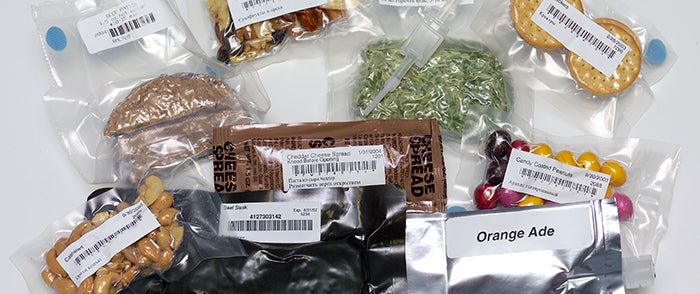Is Vacuum packing good for food safety? Posted on 30 Mar 23:42
There are numerous types of equipment being marketed for vacuum packaging food in the house. They differ significantly in technology, features and cost, and normally are called vacuum packaging machines or vacuum sealers. These devices may extend the storage time of refrigerated foods, dried foods and frozen foods. However, vacuum product packaging is not a substitution for heat processing of house canned foods.
Vacuum product packaging is likewise not a substitution for the refrigerator or freezer storage of foods that would otherwise require it. In fact, vacuum packaging can add to the issues connected with keeping of foods that are perishable (which are foods not stable at the temperature level of a room that need a fridge or freezer).

There are lots of preventative measures that must be taken when vacuum packaging disposable foods for refrigerator or freezer storage. You have to assume that the subject of spoiling food carries the danger of potential pathogenic contamination. And, when frozen food is ready to be defrosted and utilized, steps to reduce the risks from microorganisms in food need to still be followed. Once again, perishable foods must still be cooled or frozen for storage after packing in a vacuum or partial vacuum environment.
Making a vacuum implies eliminating air from the contents of a container. Oxygen in ecological air does promote specific reactions in foods which can downgrade the food quality. For instance, oxidative rancidity of fats in food and specific color modifications are promoted by the existence of oxygen. For that reason, removal of oxygen from the environment will maintain particular quality attributes and extend the food's shelf life based upon quality.
However, elimination of oxygen from the surrounding environment does not remove the possibility for all bacterial development; it simply alters the nature of what is most likely to happen. In fact, exactly what is probably to be removed is development of putridity germs. The bacteria that usually ruin the quality of food in visible ways (smell, color, sliminess, etc.) prefer to have oxygen in the environment. If able to multiply on foods, this type of bacteria can let you know if a food is going bad before it reaches the point when it makes someone ill. In an almost oxygen-free environment like vacuum product packaging produces, the wasting bacteria do not increase as quickly so the loss of food quality is decreased.
Some pathogenic (illness-causing) germs, nevertheless, like low-oxygen environments and reproduce well in vacuum-packaged foods. In fact, without competition from spoilage bacteria, some pathogens recreate much more quickly than in their presence. These bacteria often do not produce obvious modifications in the food, either. In the vacuum-packaged environment, food may become hazardous from pathogenic microbial development without any indicators to warn the consumer; the bacteria that would likewise normally be multiplying and spoil food in methods to make it uninviting (smell, sliminess, and so on) are unable to work without enough oxygen.
The elimination or decrease of oxygen in the storage environment is undoubtedly useful for extending the storage quality of non-perishable dry foods such as dried nuts or crackers. Products like this are low enough in moisture that microbial growth is prevented.
Vacuum product packaging can also be safe for food that will be stored frozen. However, correct thawing under conditions that minimize microbial development - like refrigeration - would be essential. If the package stays closed throughout thawing, you still have a vacuum environment where pathogenic bacteria can be active if the temperature level is warm enough.
Generally recommended freezing practices and product packaging approaches, if performed thoroughly, will produce food that remains at its best over storage times that are lengthy.
